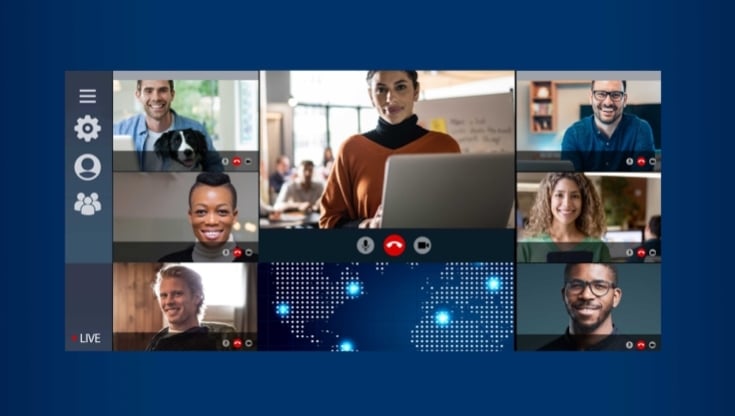7 ways to protect remote employees from a cyberattack

Working from home (WFH) has brought with it advantages such as flexibility and access to global talent, but it has also introduced new security threats to organizations.
The shift to a remote or hybrid workforce has forced companies to adopt more software-as-a-service (SaaS) applications, which has caused almost 40% of companies to lose control of their IT and security environments, according to data from a Cloudflare study. Moreover, 49% of respondents to this survey state that implementing this new working model is the main catalyst for this situation.
But all is not lost. Having employees working remotely while maintaining your business’s security is possible. It just requires careful planning, establishing a set of WFH policies and implementing tools to accompany that process. So how can companies with remote workers strengthen their cybersecurity?
7 tips to take back control of your security in a remote work model
There’s no doubt that there are security risks involved in remote working, but you can take steps to mitigate them such as:
1.Assessing your business continuity plan for remote work:
It’s important to make sure that your policies on the use of devices and systems outside the office are clear and up to date. As part of this assessment, it is a good idea to ask yourself a series of questions that will allow you to evaluate your company's remote work capabilities. For example, do you hold sufficient VPN licenses and are staff members aware of WFH policies?
2. Communicating expectations to remote workers:
Once you have created a comprehensive and detailed policy that specifies the roles and responsibilities of each employee, manager, and IT support technician, you must communicate these details to employees so that they understand the rationale behind these measures, as well as the benefits and risks of not following them.
3. Providing cybersecurity training for remote employees:
In addition to providing security tools and systems, you need to train staff on how to use them. Training can be delivered in different formats, such as webinars, videos, questionnaires, or newsletters. This helps to create a security culture in your organization, where employees take responsibility for their own security and for the security of the company's assets.
4. Implementing multi-factor authentication (MFA) to protect users and applications:
MFA provides an additional layer of security by requiring users to verify their identity with two distinct factors, such as a password and a push notification on their mobile device. This makes it difficult for cybercriminals to access user accounts, even if they know their credentials.
5. Scaling VPN capacity to meet the growing demand for remote access:
If VPN capacity is insufficient, remote employees can experience performance issues such as long wait times and frequent disconnects. Cloud-hosted firewalls can help solve these problems by load-balancing VPN traffic and scaling to accommodate changing business needs.
6. Assisting remote employees to enable secure Wi-Fi networks at home:
First, they should connect to the company network via a VPN. We also recommend they hide the SSID of their router, as well as use a modem/router with WPA2 or WPA3 protection and change the Wi-Fi network password regularly. Similarly, they should avoid the default settings and create a guest network so that other members of the household can connect without accessing the company's main network, thus maintaining a more secure connection against potential threats.
7. Applying zero trust principles to networks and devices:
Make sure you adopt a zero trust approach to security, which requires verification of the identity of all users and devices before they are granted access to resources. Similarly, make sure you have a solution in place that analyzes and blocks malicious processes and suspicious activity on endpoints, as this can be the start of an attack that spreads to the rest of the organization's computers. Detecting and responding to this type of threat in time can mean the difference between maintaining control of your company's security and a long downtime in business activity.
There is no doubt that the best way to ensure the security of your company is to establish a layered security strategy. This strategy, combining multiple protection solutions, such as MFA, antivirus or endpoint security, DNS filtering and VPN, together with a zero trust approach and security training, will enable you to protect the distributed perimeter.
If you would like to know more about the security of remote employees and distributed environments, check out the following content: Resources to Enable Remote Work Security.


